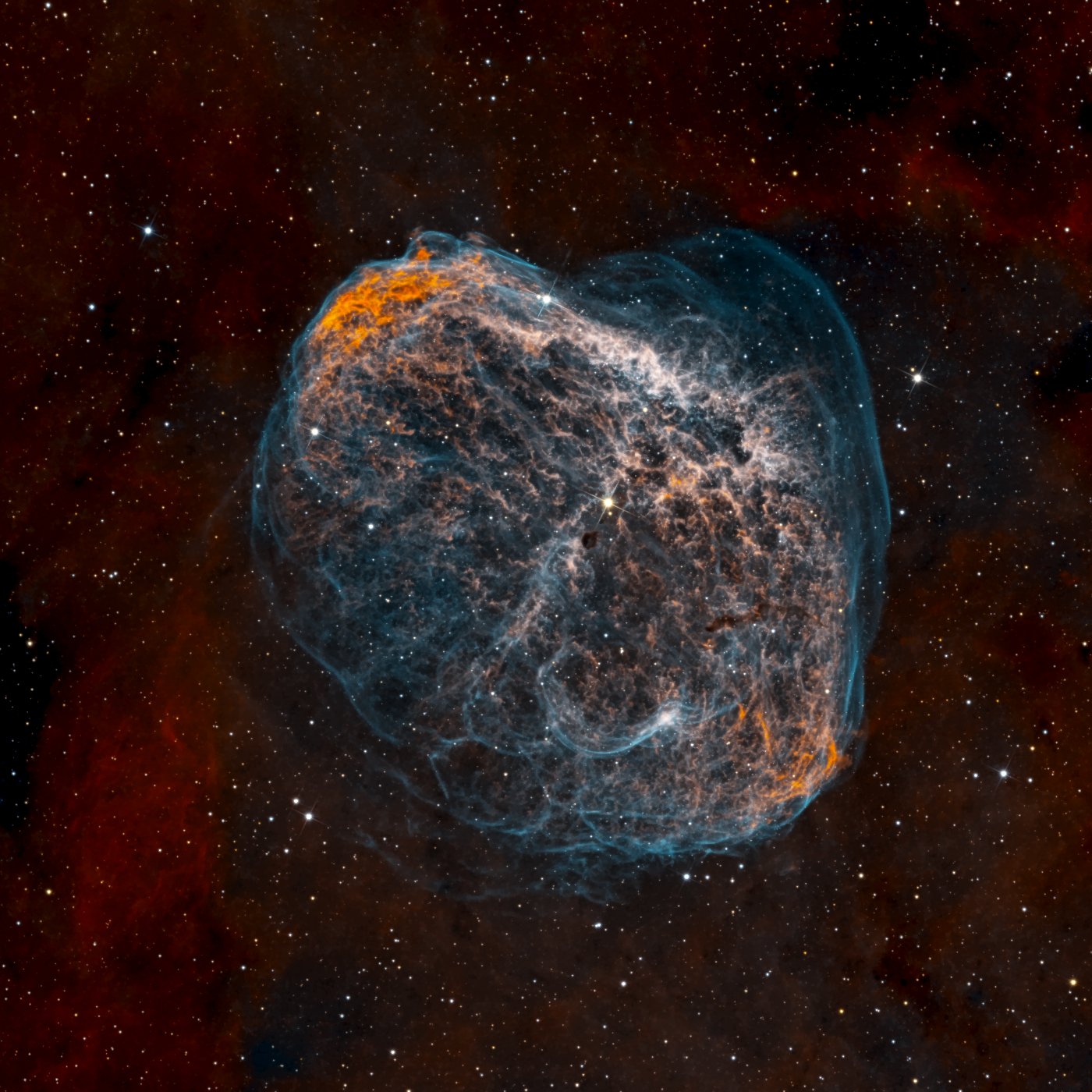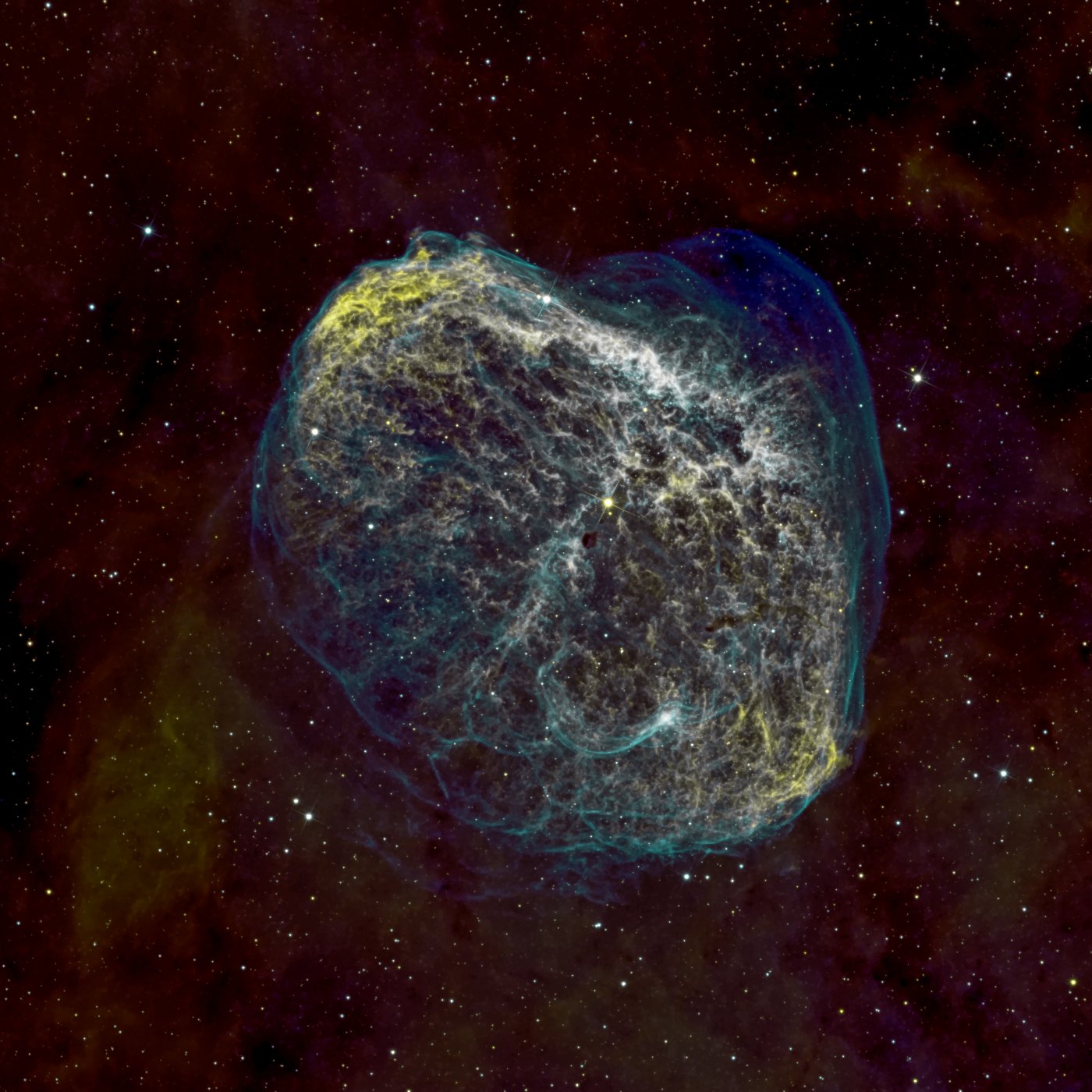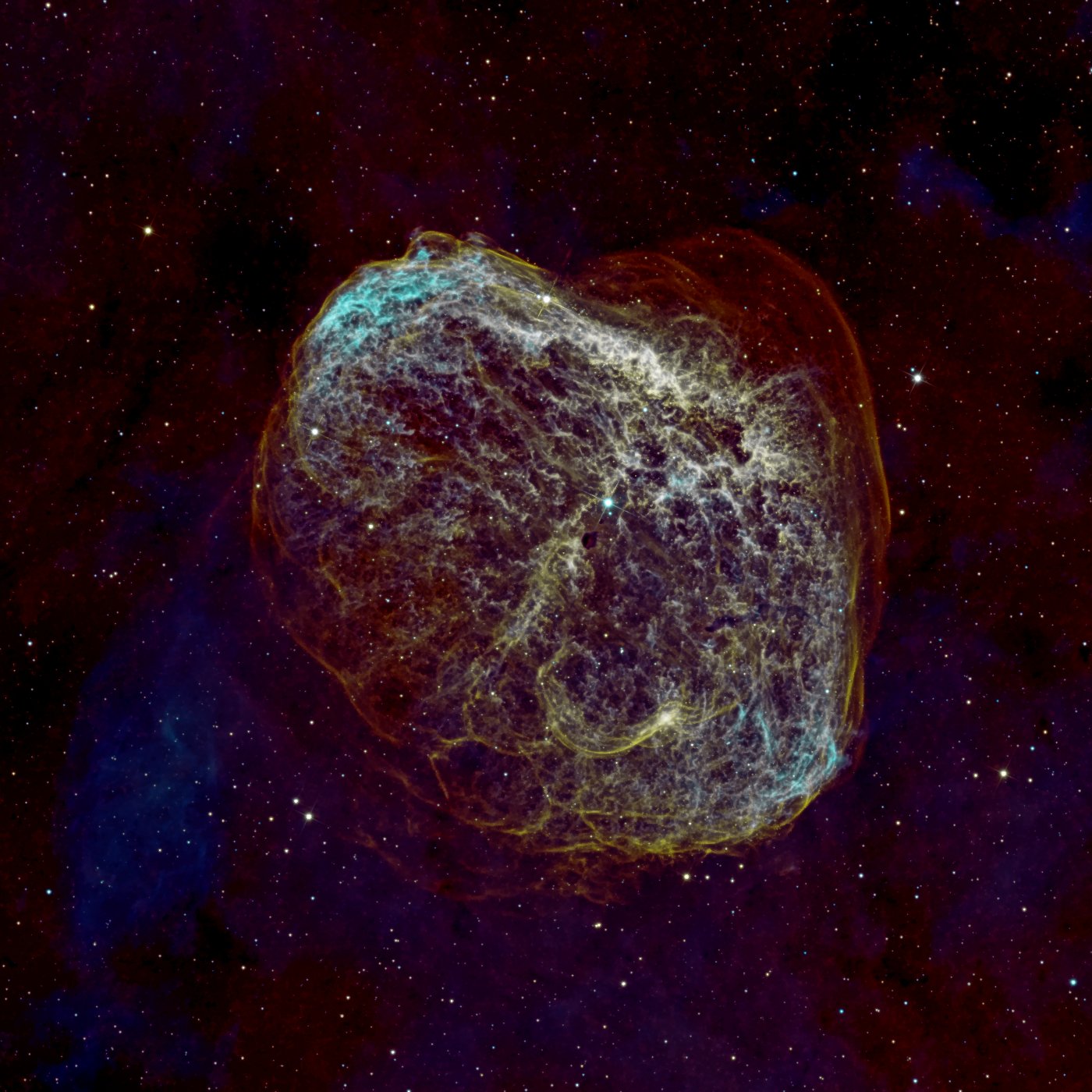SH2-105 (NGC 6888, Crescent Nebula)
SH2-105 (also known as NGC 6888 or Crescent Nebula) is an emission nebula in constellation Cygnus which ionized by the Wolf-Rayet star WR 136 which lies in a distance of about 5600 ly from earth (according to GAIA DR3). That kind of stars are supernova progenitors. At least a part of the gas was ejected when the star became a red giant. The apparent diameter of this nebula is about 17' (arcminutes).
Click on the image to load a full view / full resolution version using a JavaScript viewer.



Image data
| FOV: | 0.67° × 0.51° (full view) | ||||||||
|---|---|---|---|---|---|---|---|---|---|
| Date: | 2018-2020 | ||||||||
| Location: | Pulsnitz, Germany | ||||||||
| Instrument: | 400mm Newton at f=1520mm | ||||||||
| Camera Sensor: | Panasonic MN34230 | ||||||||
| Orientation: | North is up (approximately) | ||||||||
| Scale: | 0.8 arcsec/pixel (at full resolution) | ||||||||
| Total exposure times: |
|
Image processing
All image processing steps are deterministic, i.e. there was no manual retouching or any other kind of non-reproducible adjustment. The software which was used can be downloaded here.Image processing steps where:
- Bias correction, photon counting
- Dark current subtraction, flatfield correction, noise estimation
- Alignment and brightness calibration using stars from reference image
- Stacking with masking unlikely values and background correction
- Extracting stars from the emission line images using information from continuum images
- Denoising and deconvolution both components (stars and residual)
- RGB-composition
- Dynamic range compression using non-linear high-pass filter
- Tonal curve correction